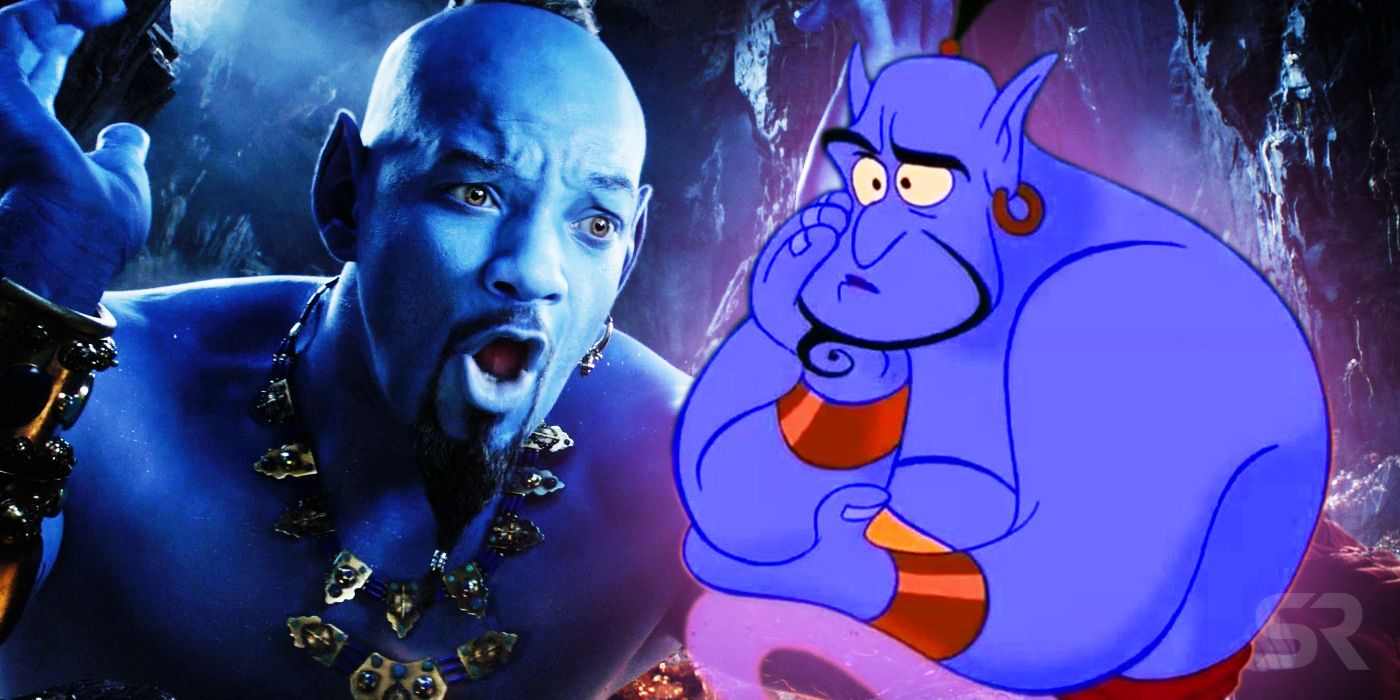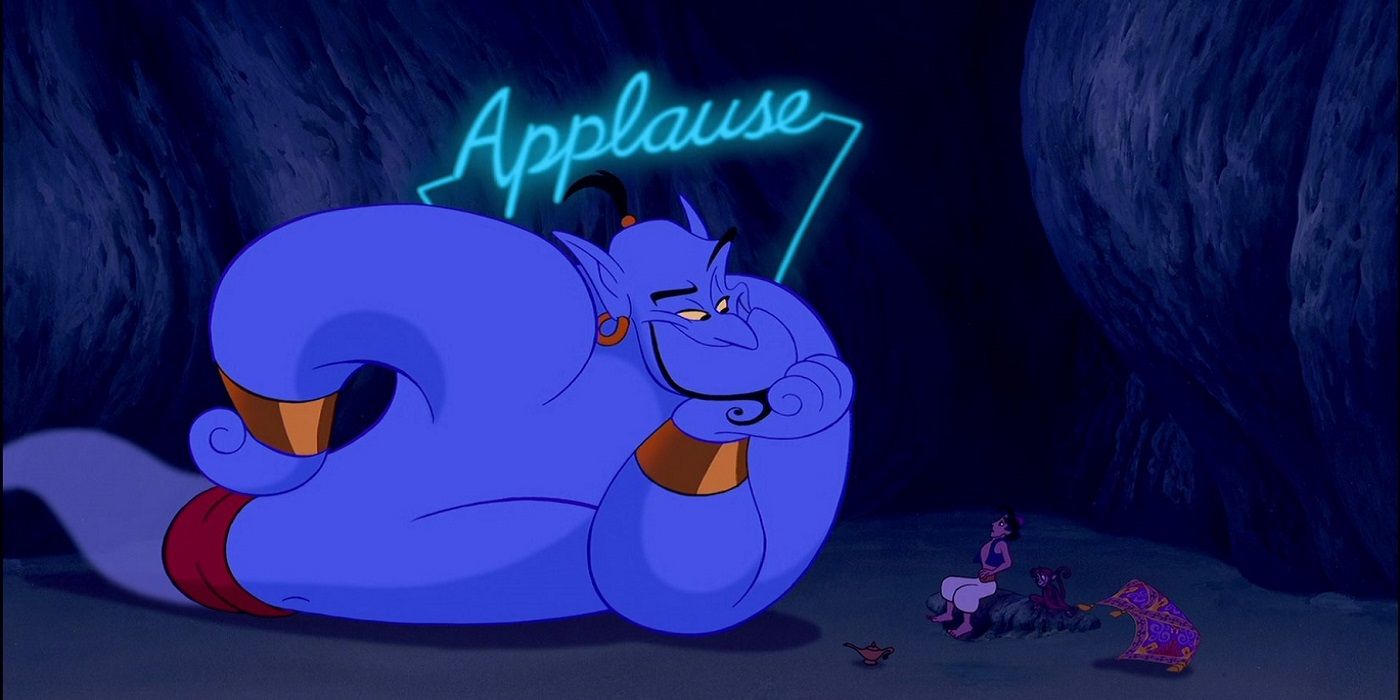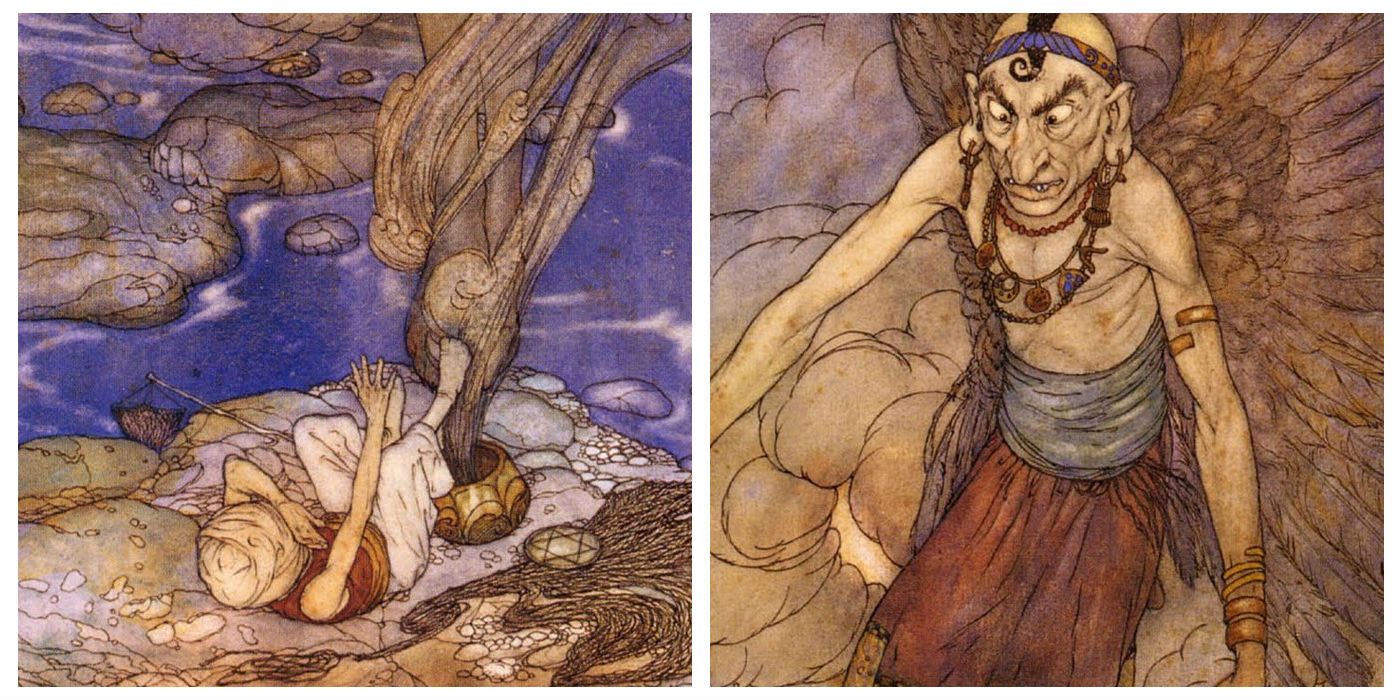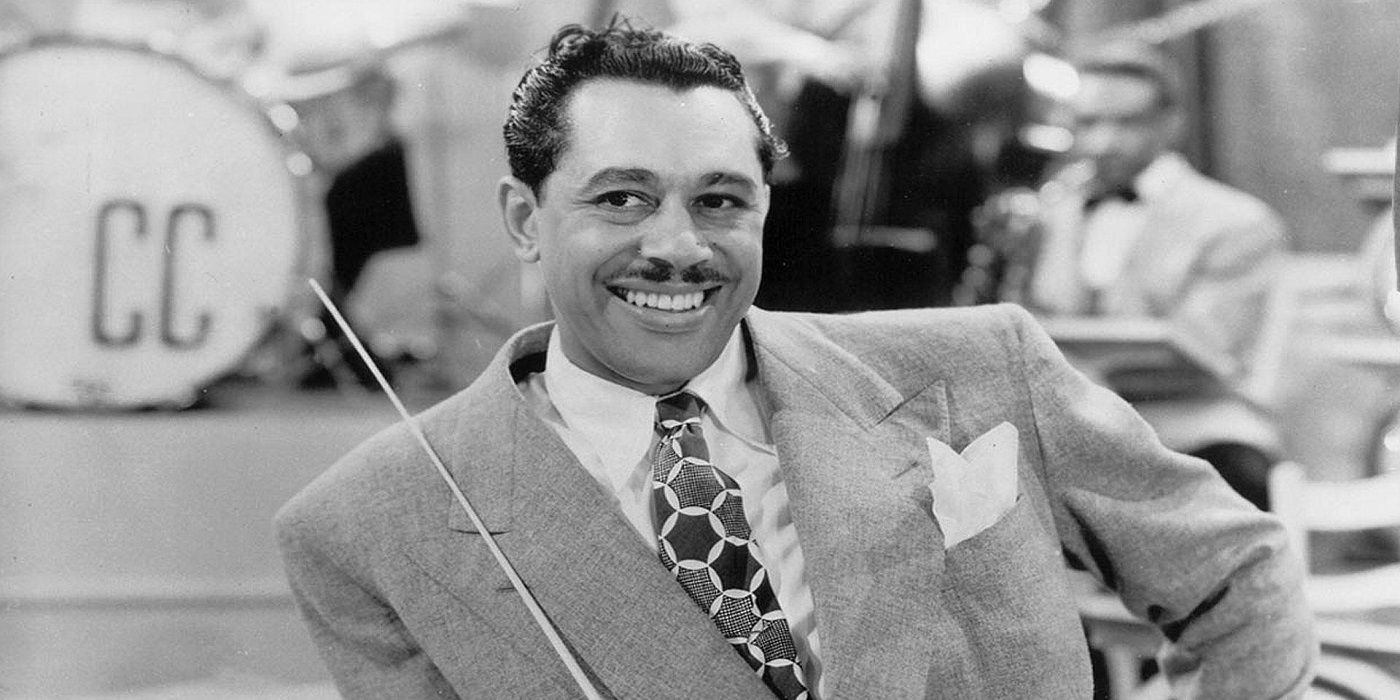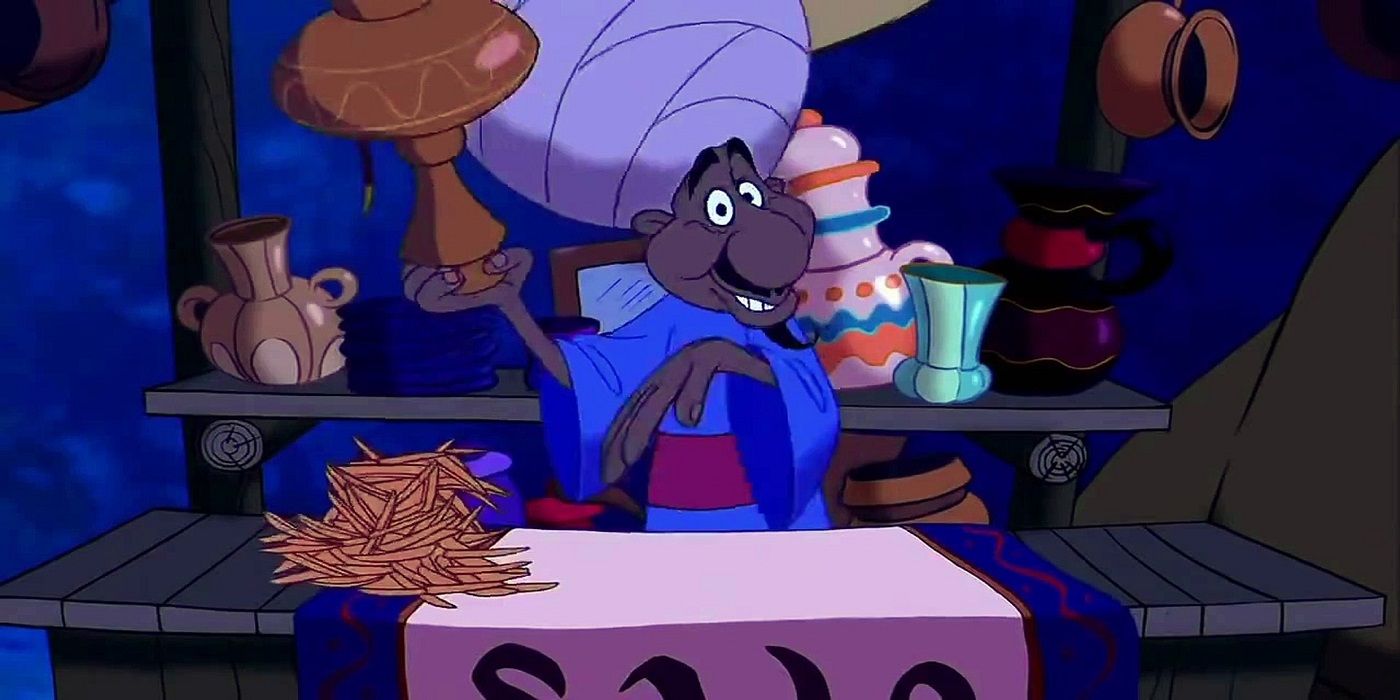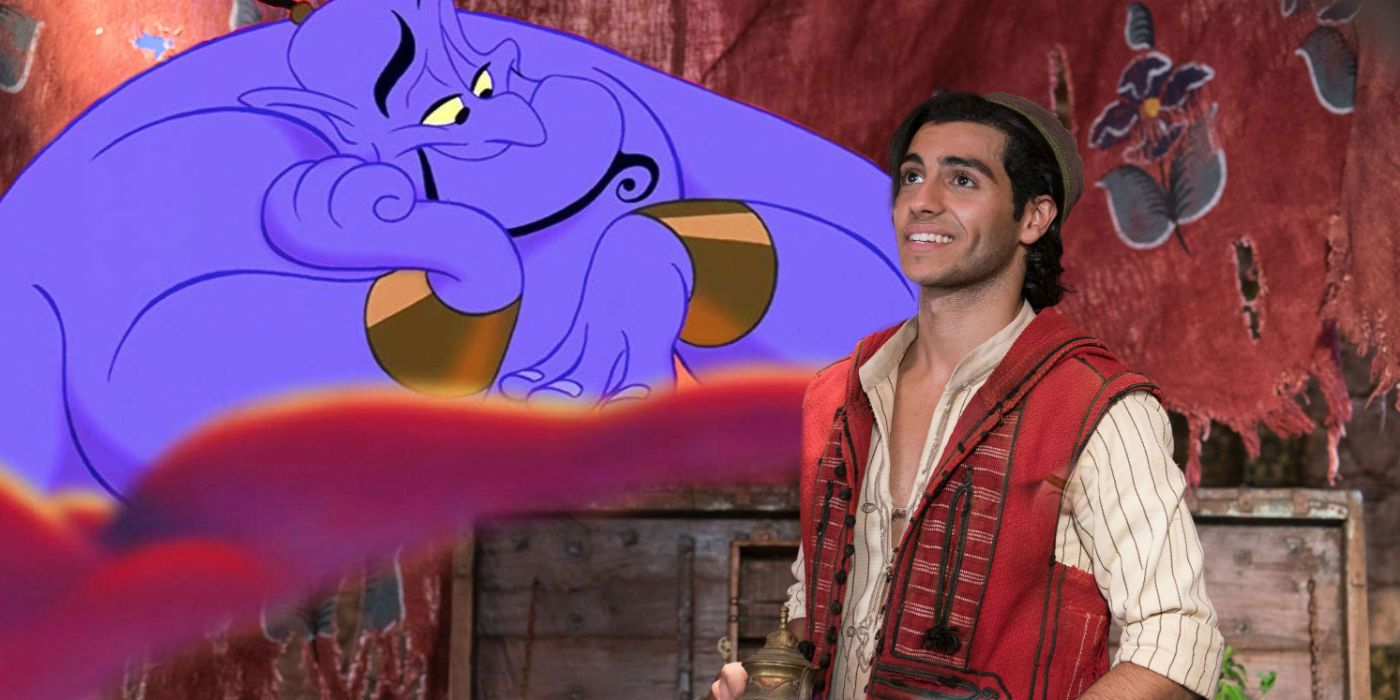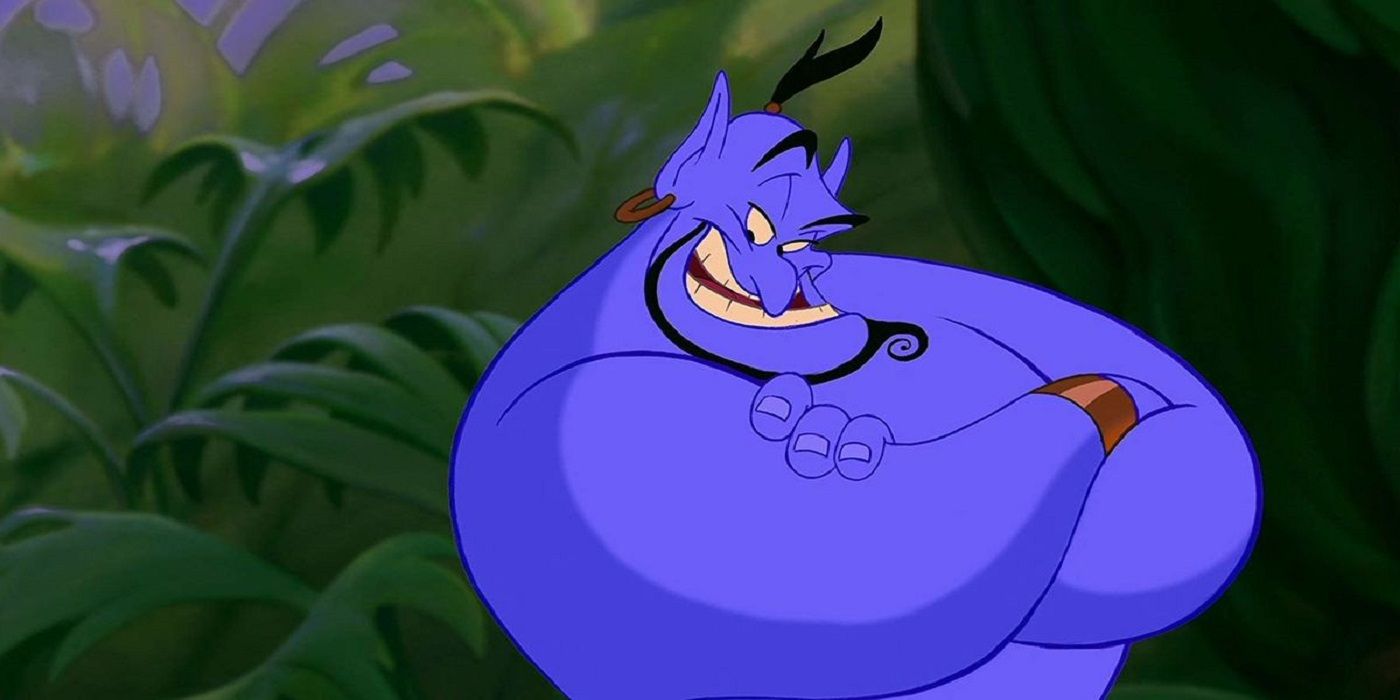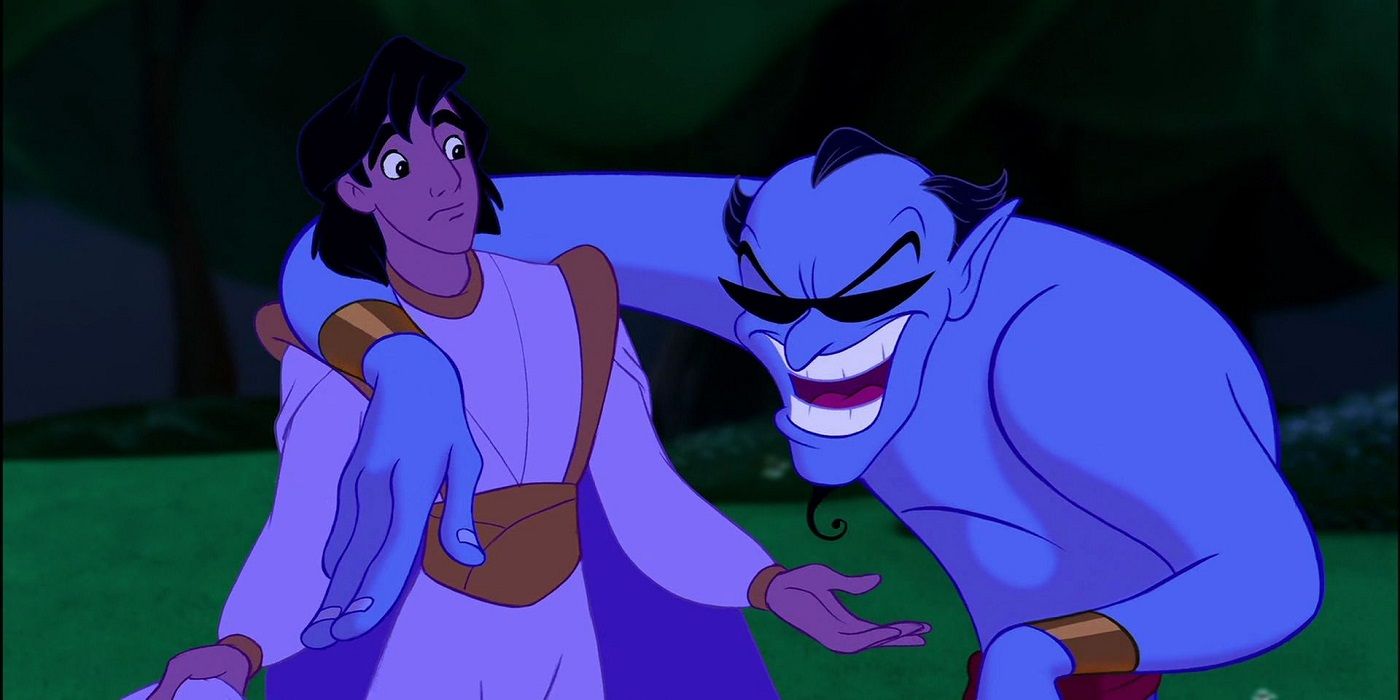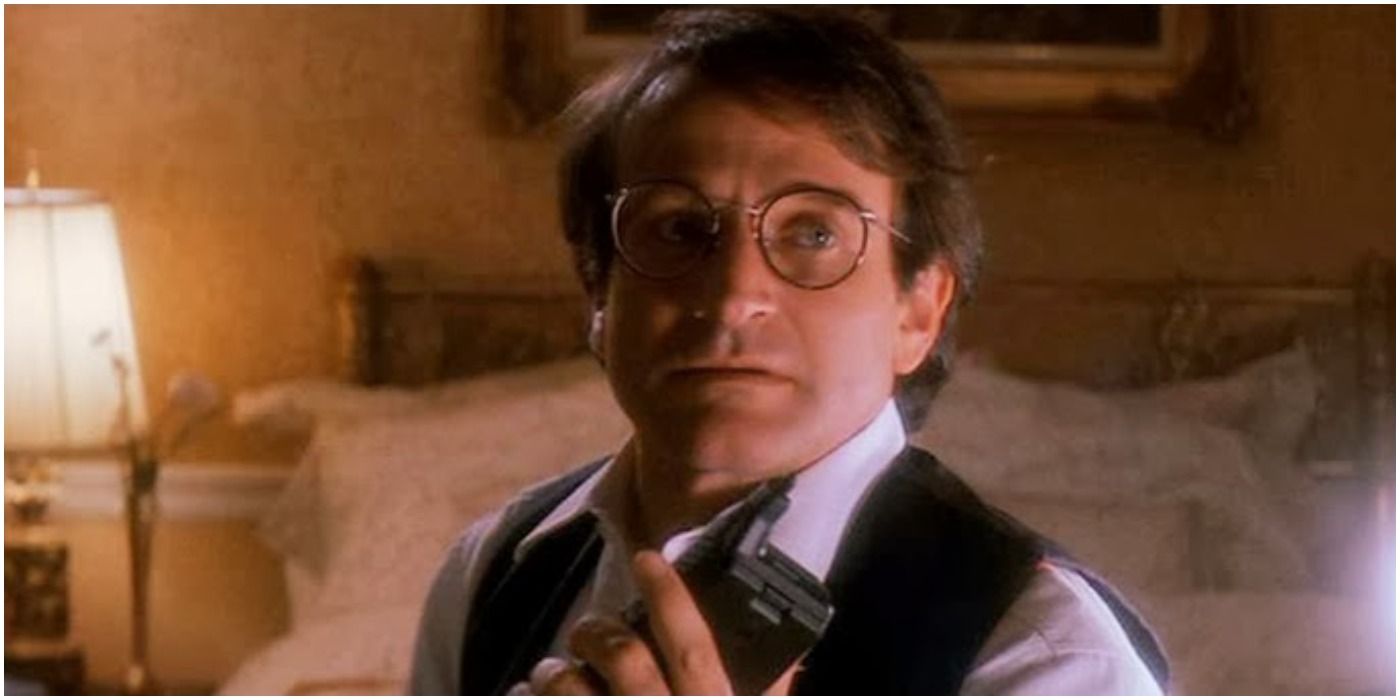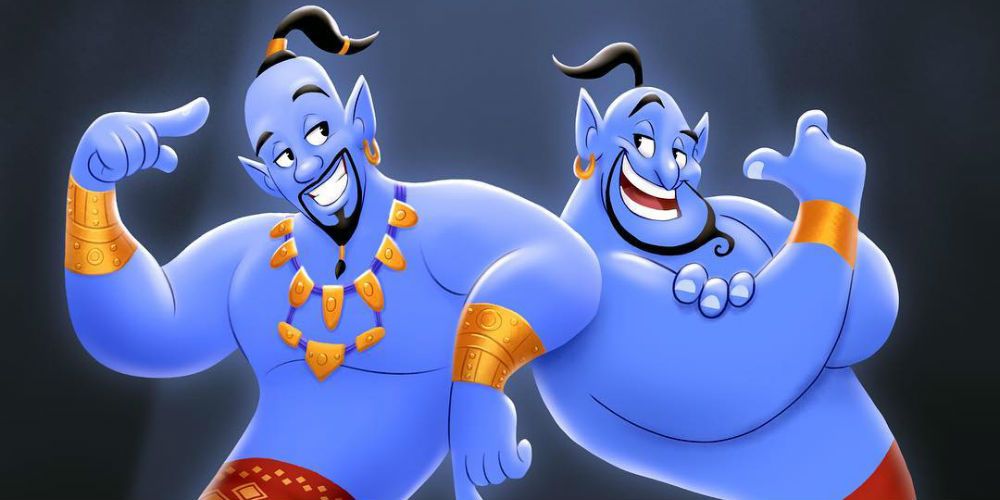Let’s face it: the real star in Aladdin – whether that is the 1992 animated movie or the 2019 live-action film – is and has always been the Genie. This big blue character brought a load of energy and an element of fun to Disney movies that most “mentor” figures in the past hadn’t been able to pull off.
Think about the Fairy Godmother in Cinderella or even the title character in Mary Poppins. Even the most iconic and powerful mentors in Disney movies had never been as jazzy, visually interesting, and eccentric as the Genie was in Aladdin. But while we think we know a lot about the character already, there are certainly many behind-the-scenes details that you may not already be familiar with.
THE ANIMATION STYLE USED FOR THE GENIE
Animator Eric Goldberg, who supervised the animation that brought the Genie to life in Aladdin, described the character as being “fast-moving” and explained that animators “took great pains to get in and out of [his] attitudes very quickly. The animation is zippy and fun, but [the animators were able to] milk those attitudes like a good character actor.”
Overall, the animation style in Aladdin took great inspiration from Al Hirschfeld’s caricatures, which were known for focusing on the clear essence of the person or character being drawn.
THE GENIE WAS ADAPTED FROM A MIDDLE EASTERN TALE
Over the long history of Middle Eastern literature, it has not been uncommon for authors to write tales that included a Jinn. This story trope has had several different incarnations over time, but perhaps the most popular piece of work that solidified the existence of a Jinn in literature came with One Thousand and One Nights, a collection of tales that included stories such as Aladdin’s Wonderful Lamp, The Seven Voyages of Sinbad the Sailor, and Ali Baba and the Forty Thieves.
Disney’s 1992 animated movie Aladdin was directly inspired by the Aladdin’s Wonderful Lamp tale. It can also be said that the Genie was a direct adaptation from the character of the Jinn, who was a prominent character in several of the tales written in the One Thousand and One Nights book.
THE REAL-LIFE INSPIRATION BEHIND THE DISNEY CHARACTER
Aside from the inspiration drawn from One Thousand and One Nights, Disney also looked for other references that could help translate this ancient mythical creature to mainstream audiences – and most importantly, children! – in the 1990s.
Lyricist Howard Ashman, who worked on the Aladdin songs, explained that the original vision for the Genie was for him to be like Cab Calloway. Born in 1907, Calloway was an African-American jazz singer who was known for his electric personality. Fortunately, Cab Calloway was still alive when Aladdin came out in 1992 and was able to see his legacy live on through Robin Williams’ performance.
THE GENIE WAS INDEED THE PEDDLER IN THE OPENING SEQUENCE
Casual Disney fans always had the sneaky suspicion that the Peddler that we see at the beginning of Aladdin (who addresses the audience directly and tells the tale of this magical lamp) was actually the Genie. For years, this sparked a friendly debate among fans of the movie, who felt like Disney would have probably made the connection between both characters a little clearer if that were to be true.
It wasn’t until 2015 that director Ron Clements finally acknowledged the truth: yes, the character that we see when Aladdin begins is indeed the Genie disguised as a Peddler.
THE GENIE WAS NOT THE FIRST DISNEY CHARACTER TO BREAK THE FOURTH WALL
While many Disney fans celebrate that fact that the Genie consistently “broke the fourth wall” so effortlessly in 1992’s Aladdin, it is actually a common misconception that he was the first character to do so. The concept of “breaking the fourth wall” can be explained as a character acknowledging the audience and the fact that he or she is being watched in a movie.
In the original animated film, the Genie does it all: he reminds Aladdin of certain lines, he pulls out the movie’s script when describing Jafar, and he even says “made you look!” directly to the audience before the credits start rolling. However, the Genie was absolutely not the first character to employ such tactics in Disney animated movies. We can trace “breaking the fourth wall” as far back as 1937’s Snow White and the Seven Dwarfs, when the Evil Queen (in the form of the Witch) explains to the audience how her poisoned apple works. In 1940’s Pinocchio, Jiminy Cricket serves as a direct narrator to the audience, even introducing himself to viewers. Other notable examples of “breaking the fourth wall” can also be seen in Peter Pan, Robin Hood, and The Little Mermaid, to name a few.
DISNEY REALLY WANTED ROBIN WILLIAMS FOR THE ROLE
It is hard to argue against the fact that a significant part of the appeal of the Genie in the 1992 Aladdin film has to do with Robin Williams’ performance as the character. To be fair, Disney never had any doubt about that, as the studio always had Robin Williams in mind for the role of the Genie and actively sought him out to voice the character.
In fact, Disney wanted Robin Williams in the movie so badly, they even used some of the actor’s recorded standup routines to serve as the voice of the Genie during the early stages of production.
MANY OF THE GENIE’S ACCENTS AND LINES WERE IMPROVISED
The comedic genius of Robin Williams is front and center in 1992’s Aladdin, as the Genie steals every scene that he is in. Williams' ability to attack a scene with different accents, voices, and improvisations was legendary. The animators had to keep up with the actor, constantly changing things in order to include all the hilarious material that the beloved funnyman was giving them.
In many ways, the general appeal of the Genie is rooted in Robin Williams’ performance as the character. While Disney already had the actor in mind and wanted the Genie to have an energetic personality, the studio was not expecting that it would be quite this explosive and fun.
ROBIN WILLIAMS VS. DISNEY
Unfortunately, it was not all fun and games when it came to Robin Williams’ relationship to Aladdin and Disney. In fact, the often-gentle actor took a firm stance against Disney’s inability to honor the contract that they had signed.
When speaking about the matter, Robin Williams said: “The one thing I said was I will do the voice. I’m doing it basically because I want to be part of this animation tradition. I want something for my children.” But then, Disney started using Williams’ voice to not only promote 1992’s Aladdin, but also sell products. “Not only did they use my voice, they took a character I did and overdubbed it to sell stuff,” the actor said. After this Aladdin debacle surrounding the Genie, Robin Williams had a rocky relationship with Disney, even refusing to voice the character in the various sequels that were released over the years.
WILL SMITH WAS VERY MINDFUL OF ROBIN WILLIAMS’ PERFORMANCE
When the 2019 live-action adaptation of Aladdin was announced, the question on everyone’s minds was: who in the world could play the Genie now that Robin Williams is gone? With the casting news of Will Smith, it seemed like Disney had found the best possible replacement for Williams, but fans still worried that no actor in the world could actually pull off a performance that was as worthy as the original one.
It was a huge challenge, but Will Smith is also an actor of great charisma. While initially reluctant to take on the role, he embraced it, but was adamant throughout the process that Robin's originally portrayal would be honored and his own would be entirely separate.
THE LIVE-ACTION BLUE GENIE WAS ALL CGI, NO MAKE-UP
When the first pieces of footage started to came out from 2019’s Aladdin, many fans wondered if at least some of the scenes featuring the big blue Genie would involve more make-up and less animation/CGI. However, the blue version of the Genie was done entirely through CGI, not with make-up.
During a time when big-budget movies rely so heavily on CGI and certain popular franchises – such as Star Wars – are trying to preserve practical effects as much as possible, it was certainly interesting that Disney committed to a purely animated blue Genie. Unsurprisingly, the heavy use of CGI on the Genie definitely sparked some debate on the internet.

